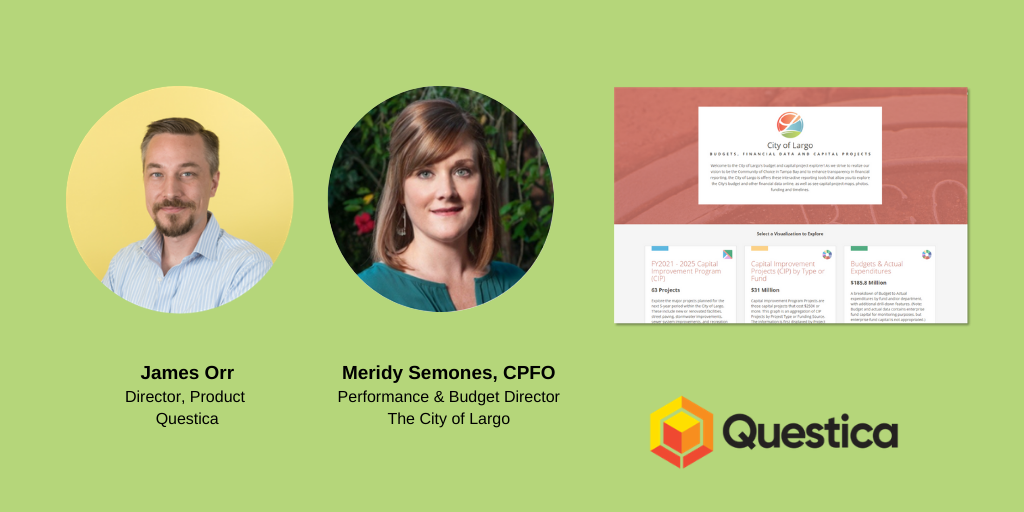Jeff Goldstein, Director – Solutions Engineer at Questica presented the Open Your Data to the Future session at the Finance Efficiency in the Public Sector 2020 Conference on November 25, 2020
Local governments need to make data-driven decision-making a part of their budgeting process. When they have data from their budgets, governments can transform this financial information into fact-based decisions. Data allows governments to pivot quickly to respond to COVID-19 issues, such as revenue shortages and changing economic circumstances. Teams can revamp plans and budgets, and use scenario planning to understand the impact of the pandemic both short and long-term. Most importantly, governments can share data with citizens and stakeholders to help them understand policy decisions.
3 Key Takeaways
1. Adapt information for remote and diverse audiences
Working from home can make it challenging for local governments to budget collaboratively and obtain important financial data. However, teams that adapted with cloud-based tools have thrived in the new work from home culture. They successfully continue to work on their budgets and can obtain the data they need for government leaders to make important decisions quickly. For example, budgeting software that allows scenario modeling can enable users to understand the short and long-term impact of COVID-19. They can compare scenarios side by side in order to make informed decisions during times of uncertainty. Using web-based transparency tools, governments can share their data with citizens and stakeholders, making the information easily accessible to the community.
2. Transparency, accountability, and consistent public engagement is critical
Data transparency allows governments to continue communicating with their citizens and stakeholders about how they are responding to the COVID-19 pandemic. This transparency is vital for building accountability and trust. When communicating with different audiences, it’s important to present data that satisfies the audience’s specific needs. For instance, internal stakeholders may want very detailed information from the government to understand how it relates to their department. For citizens in the community, they may want a high-level summary of how the government is responding to COVID-19. Budget software can help governments collect and analyze important information, and use that data to make informed decisions for their communities.
3. Provide a compelling narrative based on data and fact-based decisions
Local governments can use budget data to tell a story about how they are meeting the challenges of the pandemic. To help citizens and stakeholders understand the themes of the narrative, data needs to be transformed into visuals, such as charts and maps, where government initiatives can be explored to finer levels of financial detail. Communicating a compelling narrative to the audience keeps them engaged and generates support for the work the government does for the community.
Questica OpenBook is a data visualization tool that transforms budget data into interactive visuals for increased government transparency. Using charts, graphs, infographics and maps, local governments can highlight spending decisions, projected costs, statistics and other complex information in easy to understand visuals. Questica OpenBook visualizations are also interactive, allowing citizens to search, view and drill-down through data for a deeper understanding of government spending decisions.
To learn more about Questica OpenBook, watch our product video or book a personalized demo with one of our budgeting and transparency experts.





